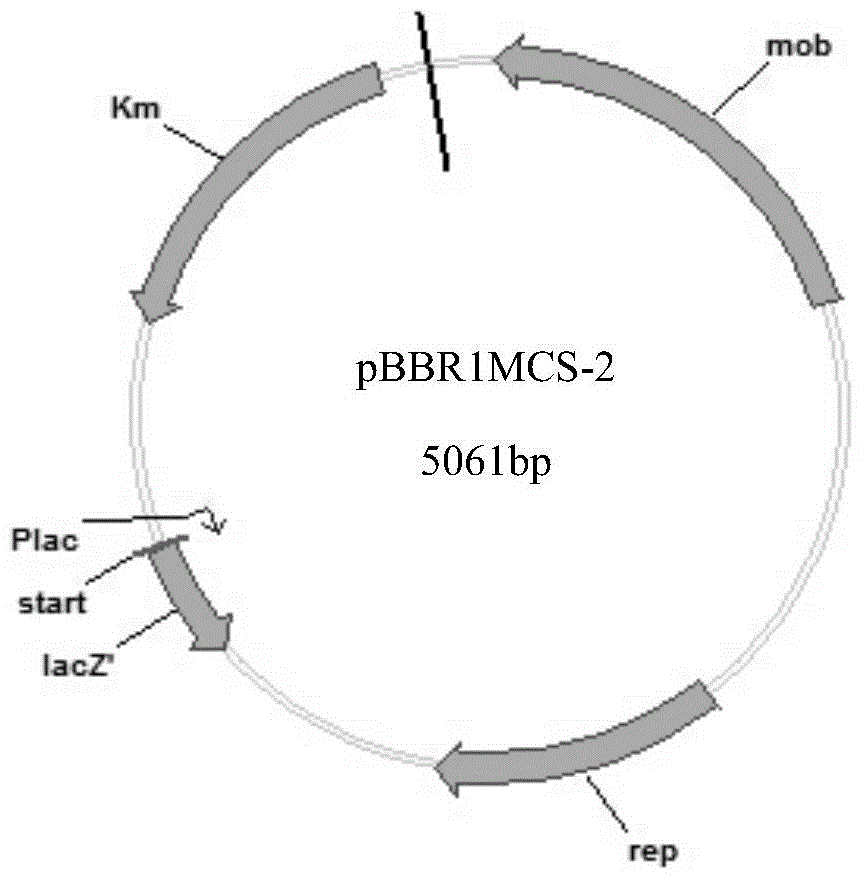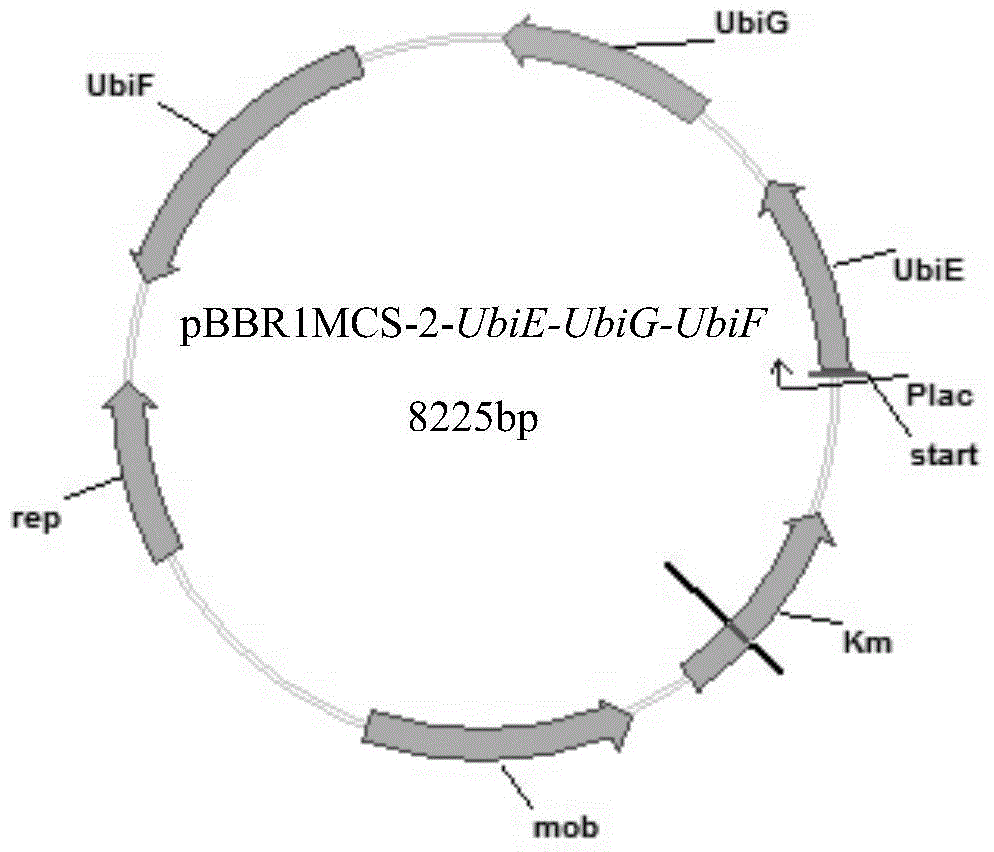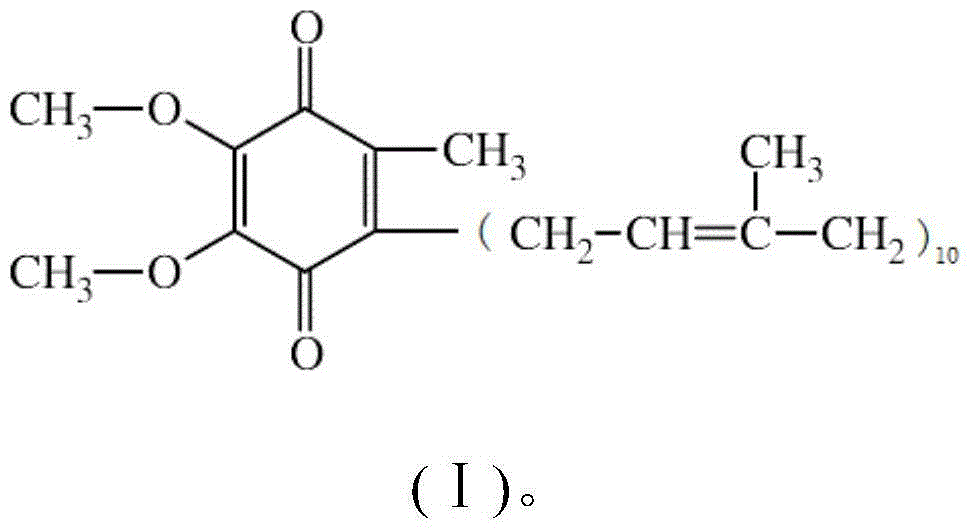Genetically engineered bacteria and application thereof in production of coenzyme Q10
A genetically engineered bacteria and gene technology, applied to genetically engineered bacteria and its application in the production of coenzyme Q10, can solve problems such as the need to improve coenzyme Q10, and achieve the effect of increasing yield
- Summary
- Abstract
- Description
- Claims
- Application Information
AI Technical Summary
Problems solved by technology
Method used
Image
Examples
Embodiment 1
[0052] The construction of embodiment 1 recombinant plasmid
[0053] 1 Design primers
[0054] Primer sequences for amplifying three target genes were designed with Primer5 primer design software, wherein,
[0055] The primers used to amplify nornaquinone methyltransferase gene (UbiE) are:
[0056] Upstream primer: 5'- TCTAGA GCATCAACGGAGGTTCAGGGTGGTGAATGAGCGACGAAACTTCCAAC-3';
[0057] Downstream primer: 5'-CCC AAGCTT CGAGCTCCGGCCGCTACTAGTTGCGAACCAGCCGCCAGA-3';
[0058] Wherein, the upstream primer has an XbaI restriction site (underlined part), and the downstream primer has a HindIII restriction site (underlined part);
[0059] The primers used to amplify 3-demethylubiquinone-93-methyltransferase gene (UbiG) are:
[0060] Upstream primer: 5'-CC AAGCTT CATCAACGGAGGAGGAGTTTGCAATGGAATCGT-3';
[0061] Downstream primer: 5'-GG ACTAGT TCAGCTGCGCCGCACGCTCGCGGTAACGT-3';
[0062] Wherein, the upstream primer is added with a HindIII restriction site (underlined part), and ...
Embodiment 2
[0104] Embodiment 2 constructs genetically engineered bacteria
[0105] 1 Recombinant plasmid transformed into Escherichia coli S17-1
[0106] Take out Escherichia coli S17-1 competent 2 tubes, add recombinant plasmid pBBR1MCS-2-UbiE-UbiG-UbiF after 10 minutes of ice bath, ice bath for 20 minutes, heat shock for 90 seconds, ice bath for 5 minutes, add 600 μl LB liquid medium, After incubating at 37°C for 45 minutes, centrifuge at 5000 r / min for 5 minutes, discard 300 μl of the supernatant, and spread the remaining liquid onto the Kanna plate.
[0107] 2 joint transfer
[0108] 1) Inoculate Rhodobacter sphaeroides CGMCC No.5997 into a test tube containing 10ml of NHU-liquid medium, and culture at 30°C and 200r / min for 36h. The formula of NHU-liquid medium is (100ml): yeast extract 0.8g, FeSO 4 0.01g, K 2 HPO 4 0.13g, CoCl 2 0.003g, NaCl0.2g, MnSO 4 0.0001g, MgSO 4 0.025g, glucose 0.3g, vitamin B 10.1μg, vitamin K 0.1μg, vitamin A 0.15μg, pH adjusted to 7.2.
[0109] 2)...
Embodiment 3
[0135] Embodiment 3 Utilizes genetically engineered bacteria to prepare coenzyme Q10
[0136] Utilize the genetically engineered bacteria NHU-EFG strain obtained in Example 2 to carry out fermentation, and use the original unmodified Rhodobacter sphaeroides CGMCCNo. Rhodobacter sphaeroids NHU-F, Rhodobacter sphaeroids NHU-G with only UbiG gene, and Rhodobacter sphaeroids NHU-EG with only UbiE and UbiG genes were used as controls to compare the production of coenzyme Q10 in the four strains.
[0137] The specific fermentation method is as follows:
[0138]1. Primary seed culture: Pick a single clone (positive clone) of the NHU-EFG strain and inoculate it in a 250ml shake flask containing 50ml seed culture solution, and cultivate it at 30°C and 200r / mn for 23h to obtain the first-grade seed solution;
[0139] The formula of seed culture solution is (100ml): (NH 4 ) 2 SO 4 0.25g, corn steep liquor 0.05g, yeast extract 0.14g, NaCl 0.2g, glucose 0.3g, K 2 HPO 4 0.05g, KH 2 P...
PUM
 Login to View More
Login to View More Abstract
Description
Claims
Application Information
 Login to View More
Login to View More - R&D
- Intellectual Property
- Life Sciences
- Materials
- Tech Scout
- Unparalleled Data Quality
- Higher Quality Content
- 60% Fewer Hallucinations
Browse by: Latest US Patents, China's latest patents, Technical Efficacy Thesaurus, Application Domain, Technology Topic, Popular Technical Reports.
© 2025 PatSnap. All rights reserved.Legal|Privacy policy|Modern Slavery Act Transparency Statement|Sitemap|About US| Contact US: help@patsnap.com



